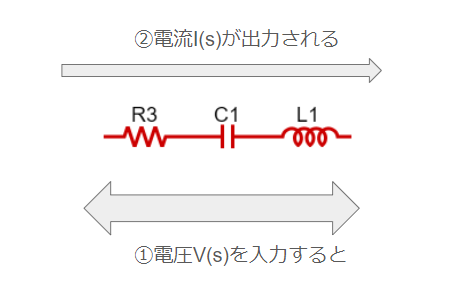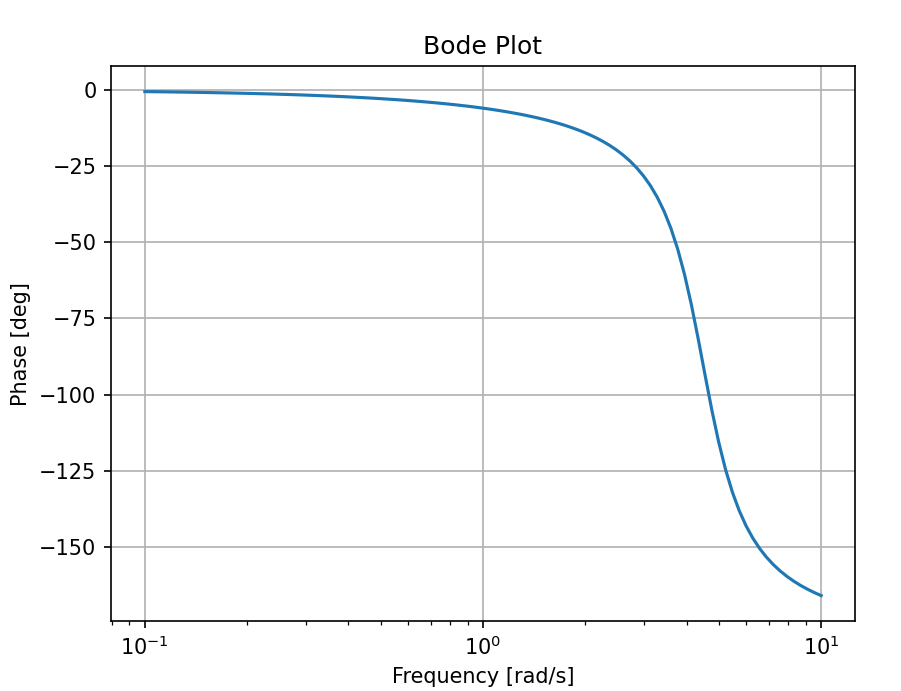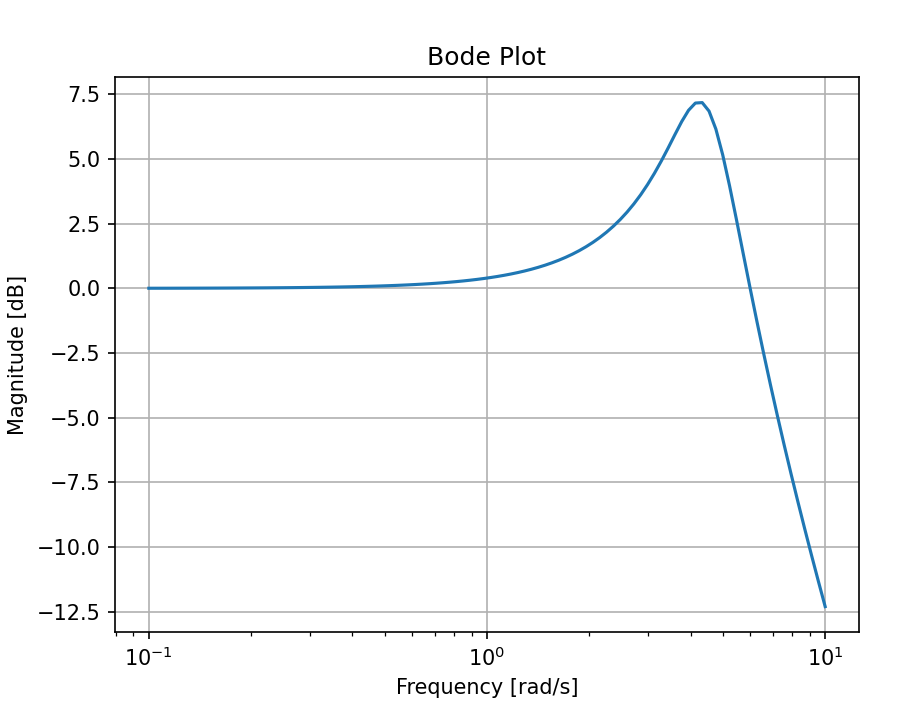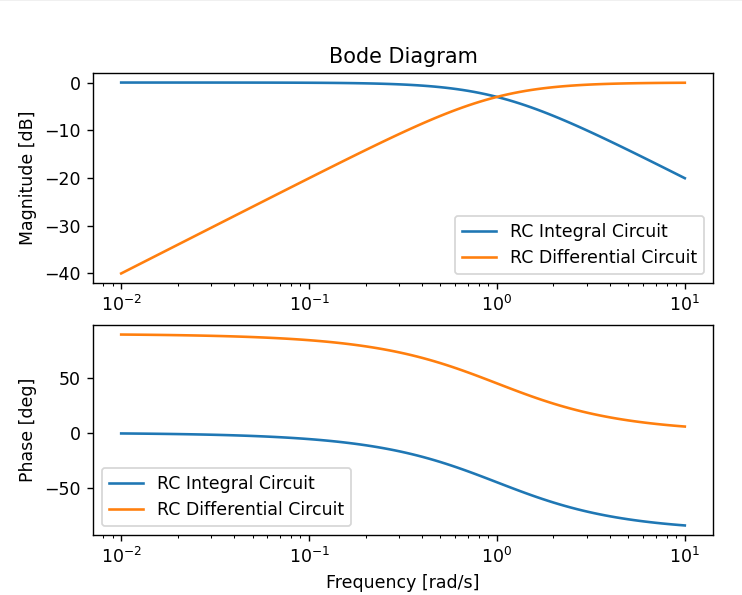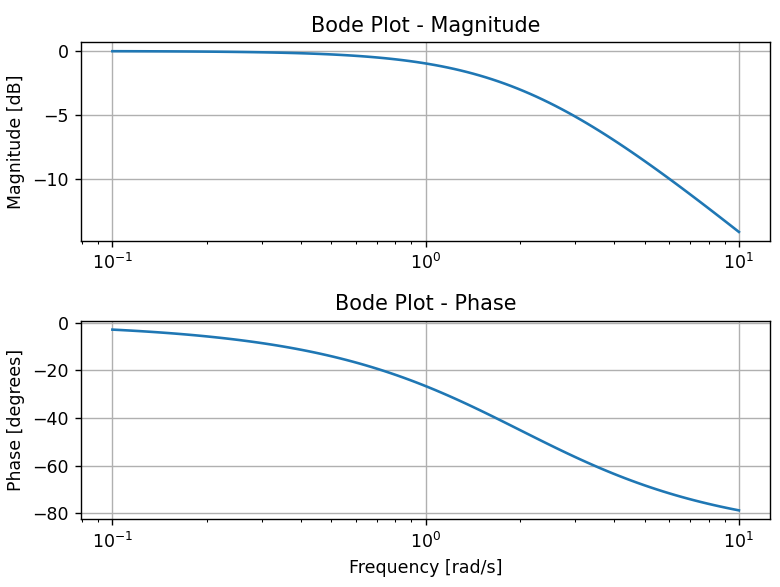直列RCL回路の周波数応答を調べるためにボード線図のプログラム描写を実装をしていく
import numpy as np
import matplotlib.pyplot as plt
from scipy import signal
# パラメータの設定
R = 1.0 # 抵抗(オーム)
L = 0.5 # コイル(ヘンリー)
C = 0.1 # コンデンサ(ファラド)
# 伝達関数の定義
num = [1]
den = [L*C, R*C, 1]
sys = signal.TransferFunction(num, den)
# ボード線図の描画
w, mag, phase = signal.bode(sys)
plt.figure()
plt.semilogx(w, mag)
plt.title('Bode Plot')
plt.xlabel('Frequency [rad/s]')
plt.ylabel('Magnitude [dB]')
plt.grid()
plt.figure()
plt.semilogx(w, phase)
plt.title('Bode Plot')
plt.xlabel('Frequency [rad/s]')
plt.ylabel('Phase [deg]')
plt.grid()
plt.show()
結果
RC積分回路の伝達関数=(1/(sC))/(R+(1/(sC)))
RC微分回路の伝達関数= (R))/(R+(1/(sC)))
import numpy as np
import matplotlib.pyplot as plt
from scipy import signal
# RC circuit parameters
R = 1.0 # Resistance value
C = 1.0 # Capacitor capacitance (for both RC integral and differential circuits)
# Calculate cutoff frequencies
cutoff_freq_rc_integral = 1 / (2 * np.pi * R * C)
cutoff_freq_rc_differential = 1 / (2 * np.pi * R * C)
print("Cutoff frequency of RC Integral Circuit:", cutoff_freq_rc_integral)
print("Cutoff frequency of RC Differential Circuit:", cutoff_freq_rc_differential)
# Transfer function numerator and denominator coefficients for RC integral circuit
num_rc_integral = [1/(R*C)]
den_rc_integral = [1, 1/(R*C)]
# Transfer function numerator and denominator coefficients for RC differential circuit
num_rc_differential = [R, 0]
den_rc_differential = [R, 1/(R*C)]
# Create transfer functions
system_rc_integral = signal.TransferFunction(num_rc_integral, den_rc_integral)
system_rc_differential = signal.TransferFunction(num_rc_differential, den_rc_differential)
# Bode Plot calculation
w, mag_rc_integral, phase_rc_integral = signal.bode(system_rc_integral)
w, mag_rc_differential, phase_rc_differential = signal.bode(system_rc_differential)
# Plot
plt.figure()
plt.subplot(2, 1, 1)
plt.semilogx(w, mag_rc_integral, label='RC Integral Circuit')
plt.semilogx(w, mag_rc_differential, label='RC Differential Circuit')
plt.title('Bode Diagram')
plt.ylabel('Magnitude [dB]')
plt.legend()
plt.subplot(2, 1, 2)
plt.semilogx(w, phase_rc_integral, label='RC Integral Circuit')
plt.semilogx(w, phase_rc_differential, label='RC Differential Circuit')
plt.xlabel('Frequency [rad/s]')
plt.ylabel('Phase [deg]')
plt.legend()
plt.show()
import numpy as np
import matplotlib.pyplot as plt
from scipy import signal
# 伝達関数の定義
A = 2
numerator = [A]
denominator = [1, A]
sys = signal.TransferFunction(numerator, denominator)
# 周波数応答の計算
w, mag, phase = signal.bode(sys)
# プロット
plt.figure()
plt.subplot(2, 1, 1)
plt.semilogx(w, mag) # デシベルスケールでプロット
plt.grid(True)
plt.title('Bode Plot - Magnitude')
plt.ylabel('Magnitude [dB]')
plt.subplot(2, 1, 2)
plt.semilogx(w, phase) # デシベルスケールでプロット
plt.grid(True)
plt.title('Bode Plot - Phase')
plt.xlabel('Frequency [rad/s]')
plt.ylabel('Phase [degrees]')
plt.tight_layout()
plt.show()
print("Gain margin (dB):", 20 * np.log10(gm))
print("Phase margin (degrees):", pm)
